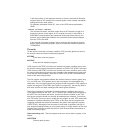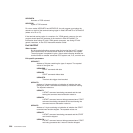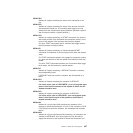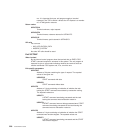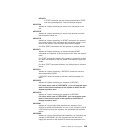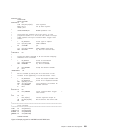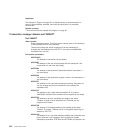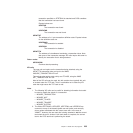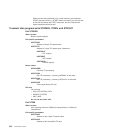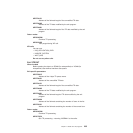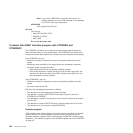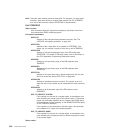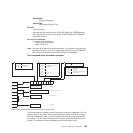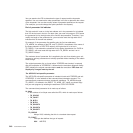transaction specified on DTRTRAN is attached and CICS considers
that the transaction has been found.
Equated values are:
UEATFND
The transaction was found.
UEATNFND
The transaction was not found.
UEPATTST
The address of a 1 byte transaction definition state. Equated values
for the definition state are:
UEATENAB
The transaction is enabled.
UEATDISA
The transaction is disabled.
UEPATTTK
The address of a doubleword containing a transaction token. Note
that some of the transaction manager XPI calls require this token to
identify the transaction that is being attached.
Return codes
UERCNORM
Continue attach processing.
XPI calls
The user exit can inquire on the transaction being attached, using the
UEPATTTK transaction token as input to the XMIQ
INQUIRE_TRANSACTION XPI call.
The exit can also set the total priority and TCLASS, using the XMIQ
SET_TRANSACTION XPI call.
Most of the XPI calls can be used, but with caution since typically this exit
is invoked under the TCP task. Thus it is advisable not to issue any XPI
calls that might cause the TCP task to wait.
Note:
1. The following XPI calls can be useful for obtaining information that could
be used to modify the attach of a transaction:
v INQUIRE_TRANSACTION
v INQUIRE_MXT
v INQUIRE_TCLASS
v INQUIRE_TRANDEF
v INQUIRE_SYSTEM
2. The fields UEPTRANID, UEPUSER, UEPTERM, and UEPPROG are
common to many of the domain global user exit points, and normally
return values associated with the current user task. In the case of
XXMATT, however, the user task that is being attached is not the current
task when the exit is invoked. Until task attach is complete, the current
task is the CICS task that is performing the attach.
Chapter 1. Global user exit programs 233



